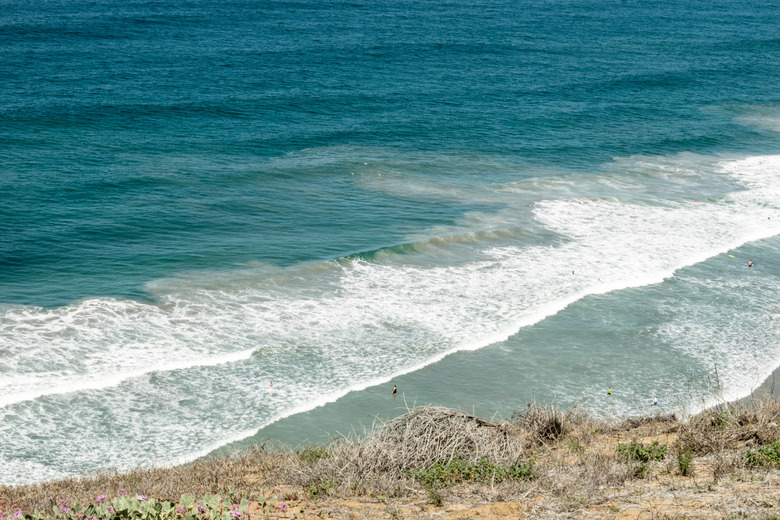What Tide Corresponds With A Solar Eclipse?
The gravitational force exerted by both the sun and the moon causes the tides in the Earth's bodies of water. Proximity to Earth means the moon is the predominant factor in determining the Earth's tides because the moon exerts greater immediate gravitational shifts. The most drastic high tides, called spring tides, occur when the Earth, moon, and sun align. Therefore, during a solar eclipse, spring tides occur.
TL;DR (Too Long; Didn't Read)
High tides occur along the path of a solar eclipse because of the alignment of the Sun, moon and Earth. The combined gravitational pull of the Sun and moon cause high tides in the path of the alignment, meaning that low tides occur at ninety degrees from the path of the solar eclipse. Due to inertia, the high tides also occur on the opposite side of the Earth from the solar eclipse.
Tidal Bulge
Tidal Bulge
The net gravitational force exerted on the Earth's water bodies results in a pull known as the tidal bulge, which always exists in two places. On the sphere of the Earth, water bulges outward at the point where it is closest to the moon, as well as the point furthest from the moon. The difference in inertia between the Earth and the water farther away from the moon causes the bulge on the far side of the Earth.
Types of Tides
Types of Tides
Earth experiences two types of tides: spring tides and neap tides. Compared to the more drastic spring tides, neap tides are relatively small. Spring tides occur at new and full moons. During new and full moons, the Earth, moon and sun form a straight line. The strongest resultant gravitational force exerted on Earth's water happens at these times. Neap tides occur during the quarter phases of the moon. During these phases, the sun and moon are at a right angle, with the Earth at the angle's vertex. During a neap tide, the sun's gravity lessens the overall effect of the moon on the water.
A Solar Eclipse
A Solar Eclipse
A solar eclipse happens when the moon passes directly in front of the sun for some observers on Earth. The moon is always in its new phase during a solar eclipse; no light from the sun shines on the face of the moon closest to Earth at this time. Therefore, during a solar eclipse, the Earth experiences spring tides.
High and Low Tides
High and Low Tides
Spring and neap tides refer to the relative magnitude of the tidal bulge. Because there are two places where the tide bulges and two corresponding points on the Earth where the water is lowered, Earth experiences two high and low tides in the course of the moon's rotation around the Earth. The precise height of any tide depends on the shape of the coastal basin and its corresponding landmass. However, during spring tide, the high tides reach their highest levels, and the low tides will be at their lowest. Therefore, during a solar eclipse, anyone along the path of the eclipse experiences a high tide while those at ninety degrees from the eclipse path experience a low tide.
Cite This Article
MLA
Murmson, Serm. "What Tide Corresponds With A Solar Eclipse?" sciencing.com, https://www.sciencing.com/tide-corresponds-solar-eclipse-3392/. 27 April 2018.
APA
Murmson, Serm. (2018, April 27). What Tide Corresponds With A Solar Eclipse?. sciencing.com. Retrieved from https://www.sciencing.com/tide-corresponds-solar-eclipse-3392/
Chicago
Murmson, Serm. What Tide Corresponds With A Solar Eclipse? last modified March 24, 2022. https://www.sciencing.com/tide-corresponds-solar-eclipse-3392/
